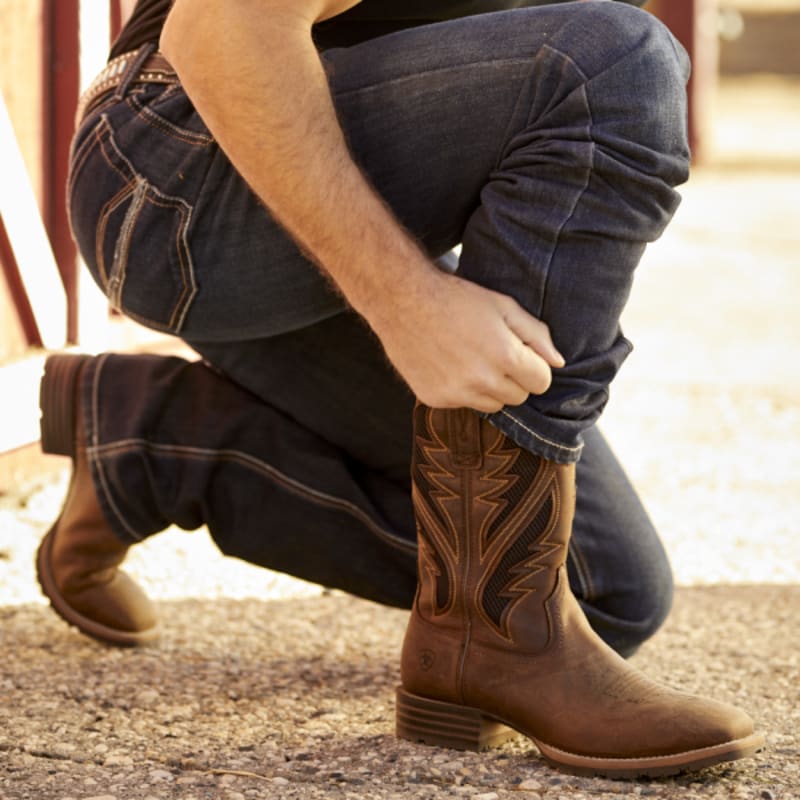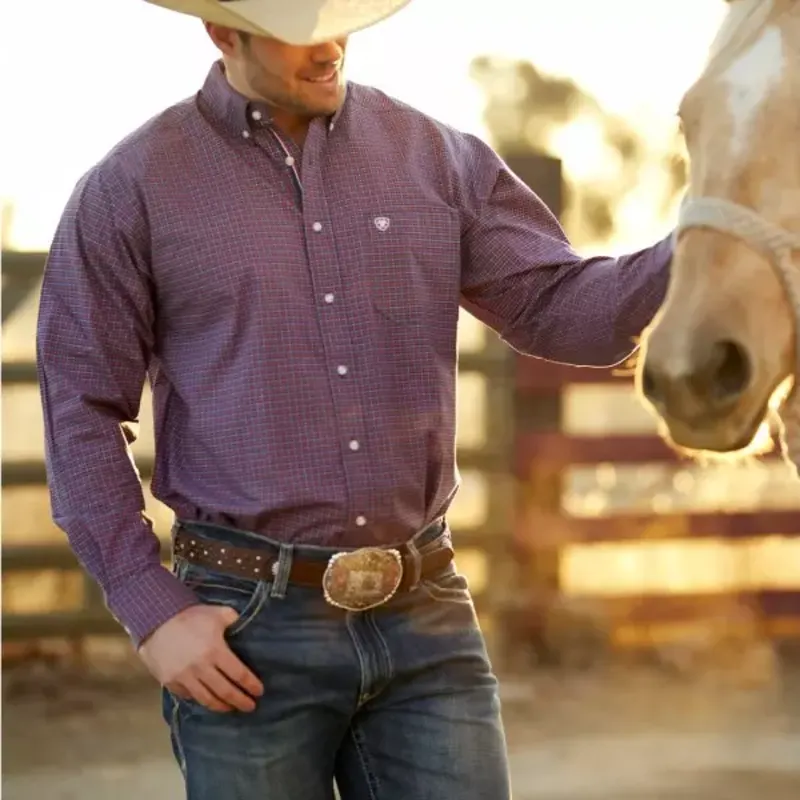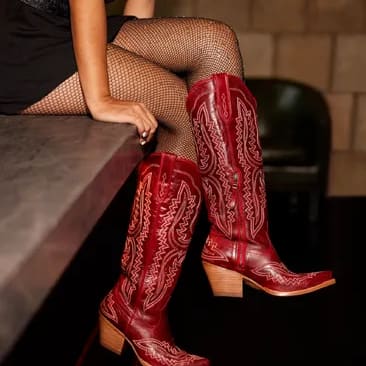
The Top Eight Different Events You'll See at the Rodeo
Today’s modern rodeo is an exhibition of ranch skills and a celebration of the adventurous and rugged life of the working cowboy. Rodeo events like bronc riding and calf roping fall into two primary categories: roughstock and timed events.
There may be nothing more American than pulling on your cowboy boots and heading to the rodeo on a Friday or Saturday night. Rodeo events include everything from fast-flying barrel racers to brave bareback bronc riders to bull riders and cowboys wrestlin’ steer.
The word “rodeo” comes from a Spanish term meaning “roundup.” The traditions of Spanish vaqueros, or working cattlemen, lent the foundations of modern rodeo when they reintroduced horses to the Americas. In the American West, the sport of rodeo was born on cattle ranches and demonstrated the real-life skill of working cowboys on the range. The day-to-day life of these hard-working men and women allowed them to develop an impressive repertoire of mounted skills as they broke out horses, roped and branded livestock and drove cattle.
Today, the types of rodeo events can be divided into the rodeo categories of roughstock events and timed events. Rodeo competitions include events scored by a judge and contests of speed. In roughstock events, cowboys ride bucking stock and are scored on their performance. This includes bareback riding, saddle bronc riding and bull riding. Timed events require mounted riders to compete for the fastest time in a particular event and include barrel racing, steer wrestling, team roping, calf roping and breakaway roping.
Roughstock: Thrills and Spills
Bareback Riding
In this event where riders attempt to stay on a bucking horse with no saddle, riders can earn up to 100 points. Half the score is determined by the skill of the rider’s performance, and the other half by how hard the horse bucks. Riders must ride the bronc for at least eight seconds to earn a qualifying score in this event.
A “mark-out” rule is also in play for bareback riding, meaning that riders must keep their boots and spurs in contact above the horse’s shoulder when the front feet of the horse touch the ground. Riders’ only source of stability (besides their own balance on the horse) is one hand in a bareback rigging, a strap at the horse’s withers that functions like a handle.
Saddle Bronc Riding
Perhaps the most classic rodeo event, saddle bronc riding is a replication of what cowboys experienced breaking out horses on the range. In modern rodeo, this event operates under the same point, eight-second and mark-out rules as bareback riding. The difference is what the riders hold on to: saddle bronc uses a bronc rein—a length of rope held in one hand that’s attached to the horse’s halter and used for balance and leverage. Where the rider chooses to hold the rope is an important factor in their success: too long or too short can make all the difference.
Bull Riding
Much like the bronc events, bull riding is based on a 100-point system. Bull riders can earn extra points if they spur their bull, but they must ride at least eight seconds to earn a qualifying score. Riders have one hand secured to a bull rope and the other is free, often seen above the rider’s head. This is because the rider’s free hand is not allowed to come into contact with the bull at any point, or they receive no score. A team of bullfighters are also in the arena during a bull ride in order to distract the bull and prevent the rider from being harmed in the event of a fall.

Timed Events
Barrel Racing
Average Time: 15 seconds (varies depending on size of arena)
Barrel racing is a speed event in which riders circle three barrels in a cloverleaf pattern. The pattern starts at the gate, and you ride past either an automatic timer or a person holding a stopwatch at the starting line. Riders can choose to ride directly toward the barrel on the right or left, and the clock is stopped when the horse and rider cross the barrier (often at the arena chute). Riders pick up a five-second penalty for knocking over a barrel.
Steer Wrestling
Average Time: 10 seconds and under
In steer wrestling, a cowboy and a “hazer” attempt to pin a steer flat on its back in the shortest amount of time. The hazer’s job is to keep the steer lined up for the cowboy. As a rule, the steer is always given a head start out of the chute and must be the first to break a tape barrier across the front of the chute. The cowboy must hold his horse back at the gate or otherwise accrue a 10-second penalty for breaking the barrier before the steer. The time is stopped when the steer is successfully wrestled to the ground and lies flat on its back.
Team Roping
Average Time: 15 seconds and under
A team roping team is made up of two riders called a header and a heeler. The two cowboys work together to rope the head and the feet of a steer in the fastest amount of time. To stop the clock after each rider has landed their rope, both rider’s horses must be facing each other, pulling the rope taut. Again, the steer must be the first out of the chute or riders accrue a 10-second penalty for breaking the barrier. In team roping, the heeler can also accrue a five-second penalty for roping one hind foot instead of two.
Calf Roping
Average Time: 9 seconds and under
Calf roping, also called tie-down roping, comes straight from working cowboys on the ranch who needed to tie down calves for branding and vaccinations, among other reasons. A mounted cowboy ropes a calf, dismounts and ties the calf’s legs. The fastest cowboy to tie three of the calf’s legs wins. The calf gets a head start out of the chute and the 10-second broken barrier penalty applies. The calf must stay tied for six seconds while the cowboy re-mounts his horse.
Breakaway Roping
Average Time: 3-4 seconds and under
Breakaway roping is a lightning-fast variant of calf roping and a relatively new event. In professional rodeo, breakaway roping is exclusively a women’s sport. Much like calf roping, the cowgirl ropes the calf around the neck, but does not tie its legs. Instead, the rope is tied to a string attached to the horn of her saddle. As the roper stops her horse, the string connecting the rope to the horn breaks away (hence the name), triggering the clock to stop. The fastest breakaway rider to rope the calf and break the string wins.
Rodeos are a showcase of a Western rider’s skills. They’re also a lot of fun for spectators, and understanding how events like barrel racing and calf roping are scored can help you enjoy a rodeo even more. If you’re gearing up for a rodeo, start with Ariat’s Western apparel that’s designed for serious riders and serious spectators alike.
Lea Brayton is a professional writer and three-day event rider currently based in sunny Ocala, Florida —the “Horse Capital of the World.”




